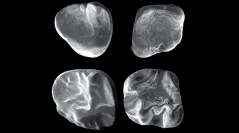

 Geodiversitas
36 (3) - Pages 421-475
Geodiversitas
36 (3) - Pages 421-475The rodents from the Upper Messinian deposits of Moncucco Torinese (MCC) (Piedmont, NW Italy) are described. Stratigraphic considerations indicate that the fossiliferous deposits exposed at MCC date back to the post-evaporitic phase of the Messinian Salinity Crisis (5.40-5.33 Ma). Thirteen rodent taxa belonging to the families Cricetidae Fischer, 1817, Muridae Illiger, 1811, Gliridae Thomas, 1897 and Sciuridae Fischer, 1817 are recognized based on 1177 teeth. The occurrence of Centralomys benericettii (De Giuli, 1989), Paraethomys meini (Michaux, 1969) and Apodemus gudrunae van de Weerd, 1976 allows to compare MCC with other latest Messinian localities of northern Italy, such as Brisighella and Verduno. The rodent assemblages described herein and, more particularly, the taxa A. gudrunae, Muscardinus vireti Hugueney & Mein, 1965 and Glirulus lissiensis Hugueney & Mein, 1965, suggest that MCC can be referred to the Late Turolian (MN13). Moreover, the presence of taxa commonly found in Pliocene localities of western and central Europe (Occitanomys brailloni Michaux, 1969, Micromys bendai van de Weerd, 1979, Neocricetodon magnus (Fahlbusch, 1969) and Sciurus warthae Sulimski, 1964) indicates that some typical Ruscinian elements were already present at the end of the Miocene at least in southern-central Europe. The rodent assemblages of MCC also include Apodemus atavus Heller, 1936, Eliomys aff. intermedius Friant, 1953, Glis minor Kowalski, 1956, and Pliopetaurista pliocaenica (Depéret, 1897). Overall, the fossil assemblages documented in this paper remarkably expand our knowledge on the Late Miocene rodent communities of Italy, also providing useful data for the interpretation of biogeographic relationships between western and eastern Europe at the end of the Messinian.
Rodentia, Turolian, Late Messinian, Italy.